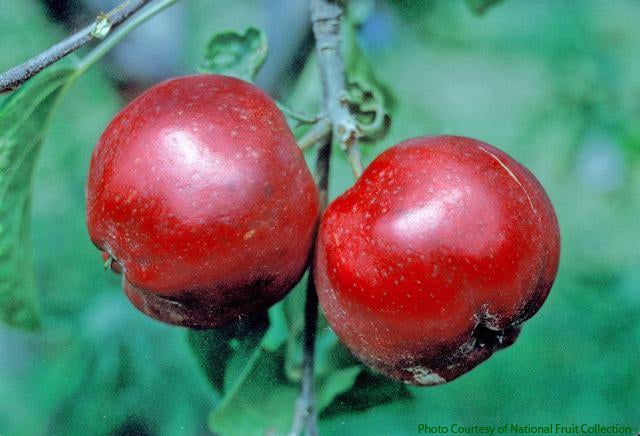Pomiferous
Welcome to the world's most extensive apples (pommes) database.
Information on over 7,000 apples is available here, all carefully researched and provided in a way that is easy to navigate.
Gladstone

type: Dessert
synonyms: Jackson's Seedling, Mr. Gladstone, Mister Gladstone
identification: Medium size, round conic and somewhat irregular with pronounced, uneven ribs. Five crowned. Thin skinned. Base colour is greenish yellow with extensive red flush and bright red stripes. The stem is medium long and stout, set in a narrow, shallow cavity. The calyx is large and can be closed or partly open, set in a deep and wide basin.
characteristics: The flesh is white with a greenish tinge and stained red under the skin. Soft, crisp, juicy and sweet-tart with raspberry flavours ripening to red currant.
uses: An early ripening dessert apple.
origins: First noted in in the mid-1800 near Kidderminster, Worcestershire (U.K.) by nurseryman William Jackson of Blakedown Nursery, but by that time the tree was estimated to be over a 100 years old and must have originated as a chance seedling sometime in the middle of the 1700s. The apple was introduced in 1868 as Jackson's Seedling and renamed in 1883 as Mr. Gladstone, in honour of William Gladstone, the British Prime Minister of the time. That name was subsequently shortened to Gladstone during its popularity as an early British market apple, a reputation it held until the 1960s.
cultivation: Moderately vigorous, upright spreading spur bearer. Precocious.
progeny: Langley Pippin, Laxton' s Advance, Laxton's Early Crimson, Laxton's Leader
cold storage: Does not keep in storage.
vulnerabilities: Scab and canker resistant.
harvest: Ready for harvest starting at the end of second period. Fruit has a tendency to crack.
pollination group: D
pollination peak: 13
ploidism: Partly self sterile but produces best in the presence of a source of compatible pollen.
harvest period: 2
Donate a cider?
©2016-2021 Pomiferous.com. All rights reserved